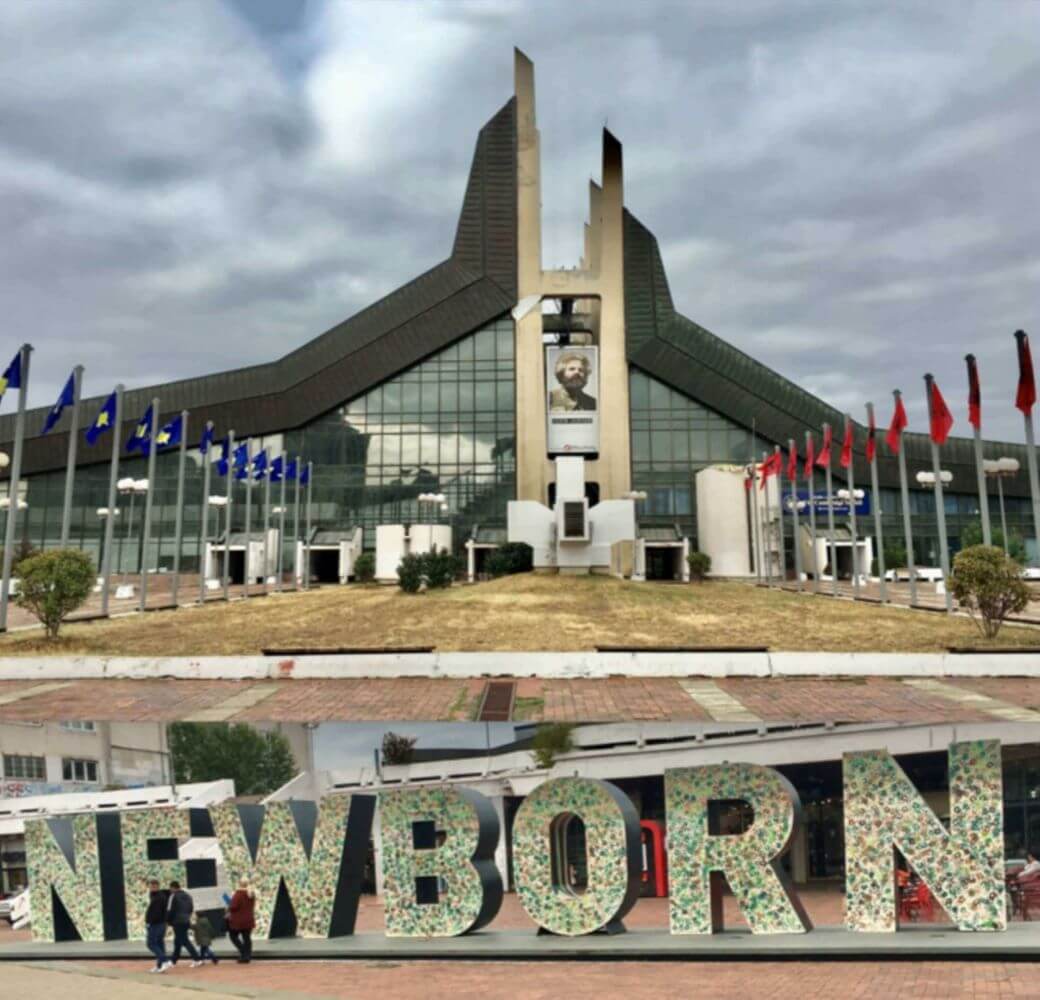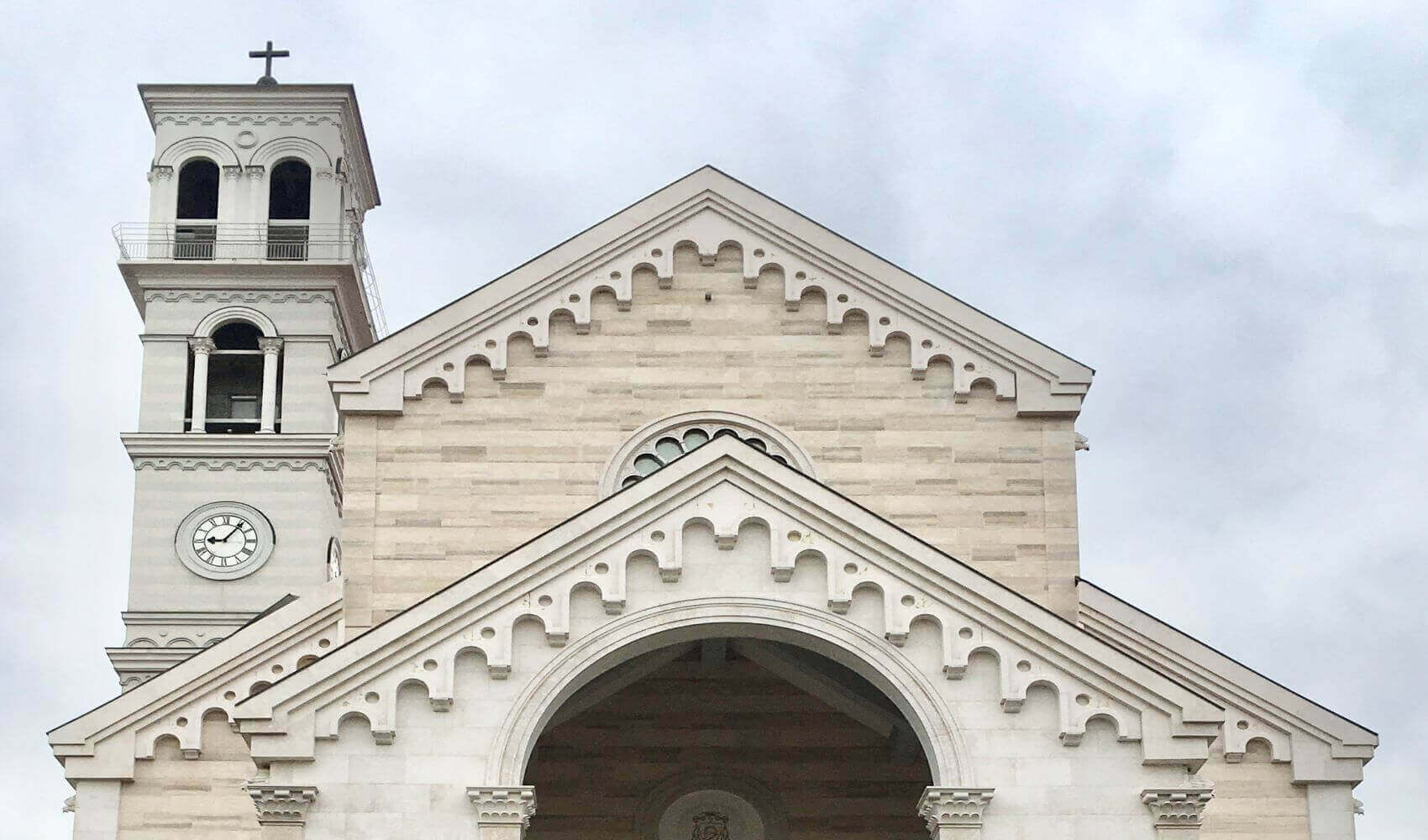
In September 2021, I had been visiting a friend in Bosnia, and had two days to get to Greece to meet an old friend from my French high school. Instead of taking the plane, which would have been far too placid (not to mention pricey and pollutive), I opted to do the journey by bus, which included a 10-hour layover in Kosovo. I almost had to shift my travel plans however, as I was traveling during the 2021 North Kosovo license plate crisis. Basically, Kosovo decided to require vehicles with Serbian license plates to put on temporary Kosovan ones. Its Serbian minority population was upset, and blockaded the border crossings that my bus needed to use to enter the country. To support them, Serbia started moving troops and tanks to the border, putting NATO on the alert in case the tensions escalated into violence. Fortunately, fate was generous to my travel plans (not to mention to Kosovo), and a deal to deescalate the situation was reached on September 30th, the day before my bus was scheduled to leave.
Pristina (pronounced Prishtina) is the capital city of Kosovo. The Ottoman Empire controlled Kosovo until its defeat in the First Balkan War of 1913, when it was forced to give up this territory to Serbia. Both Serbia and Kosovo became part of Yugoslavia in 1918. During World War II, they were occupied by Italy, which regrouped Kosovo as part of Albania. Kosovans are ethnically and culturally Albanian, so this Italian invasion was fairly popular in the province. After Italy was defeated by the Allied powers in 1943, Kosovo fell back under Yugoslav rule.
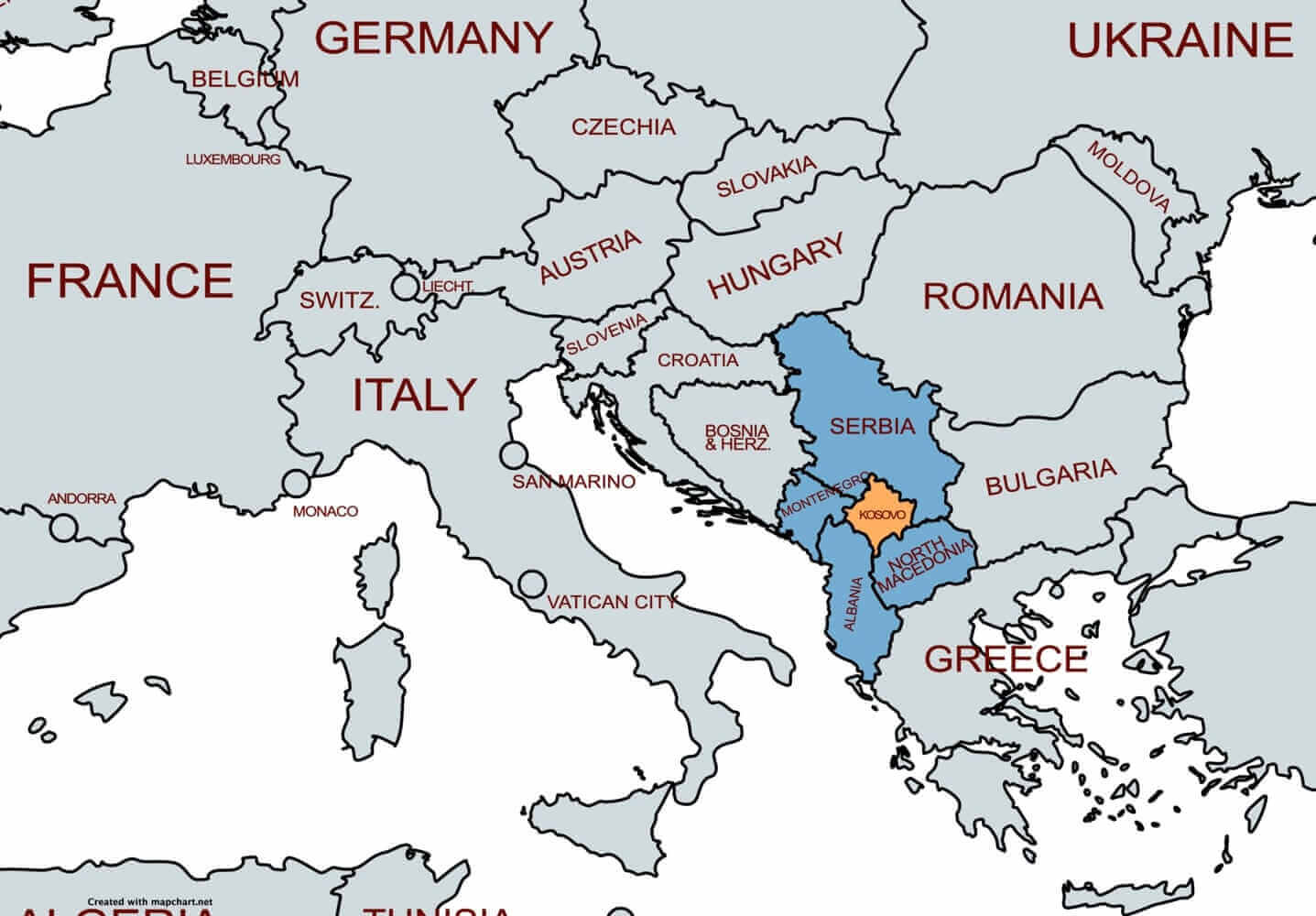
Kosovo's ethnic and cultural connection to Albania proved to be a continual source of tension between Kosovans and Serbs in Yugoslavia. Kosovo attempted to gain its independence during Yugoslavia's breakup in the 1990s. The emergence of resistance movements such as the Kosovo Liberation Army (KLA) led to the Kosovo War of 1998-1999. The Yugoslav army attempted to expel over a million Albanians from Kosovo in an ethnic cleansing campaign, and killed a large number of Kosovans in the Prekaz and Racak massacres, among others. The KLA's retaliation against ethnic Serbs living in Kosovo resulted in many deaths as well. I was astonished to learn that such a small country could be the subject of so much bloodshed and infighting. To give you an idea of how small it is, the bus ride from Pristina in the North to the nation's Southern border with North Macedonia took me around 1 hour.
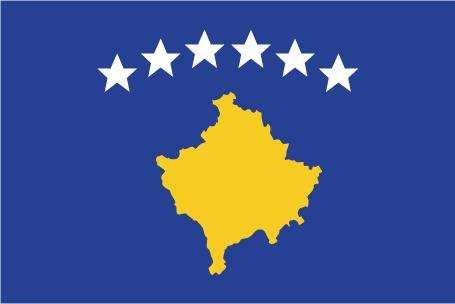
NATO responded to Yugoslavia's attempted ethnic cleansing of Kosovo by bombing the Yugoslav capital of Belgrade in 1999, which forced the Yugoslav president Milosevic to withdraw his troops. Milosevic would later be forced to resign from office, and would be arrested and tried for war crimes by the International Criminal Tribunal for the former Yugoslavia. Kosovo declared its independence in 2008, and has been a de-facto self-governing state since then. Today Serbia, the successor state to Yugoslavia after its breakup, still considers Kosovo to be a breakaway province. This would explain why there was no passport control when I traveled between the two countries by bus. As of 2021, Kosovo's independence is recognized by just over half the world.
The first monument that I saw in Pristina was a giant statue of Bill Clinton, the 42nd US president. I was surprised to learn that Clinton is extremely popular in Kosovo. This is because he spearheaded the NATO intervention against Yugoslavia during the Kosovo War. In fact, one of Pristina's main streets is called Bill Clinton Boulevard. There was even a popular fancy clothing store named after Hillary Clinton! I had always thought that Wyoming was the most pro-American US state I have visited, but Kosovo puts even their patriotism to shame: I saw almost as many American flags in Pristina as I did Kosovan ones. Having grown up overseas continually exposed to the US's problematic military interventions in Iraq and Afghanistan, it was heartwarming to see that one small country in the Balkans appreciated what we had done (although I imagine that Serbia certainly feels otherwise).
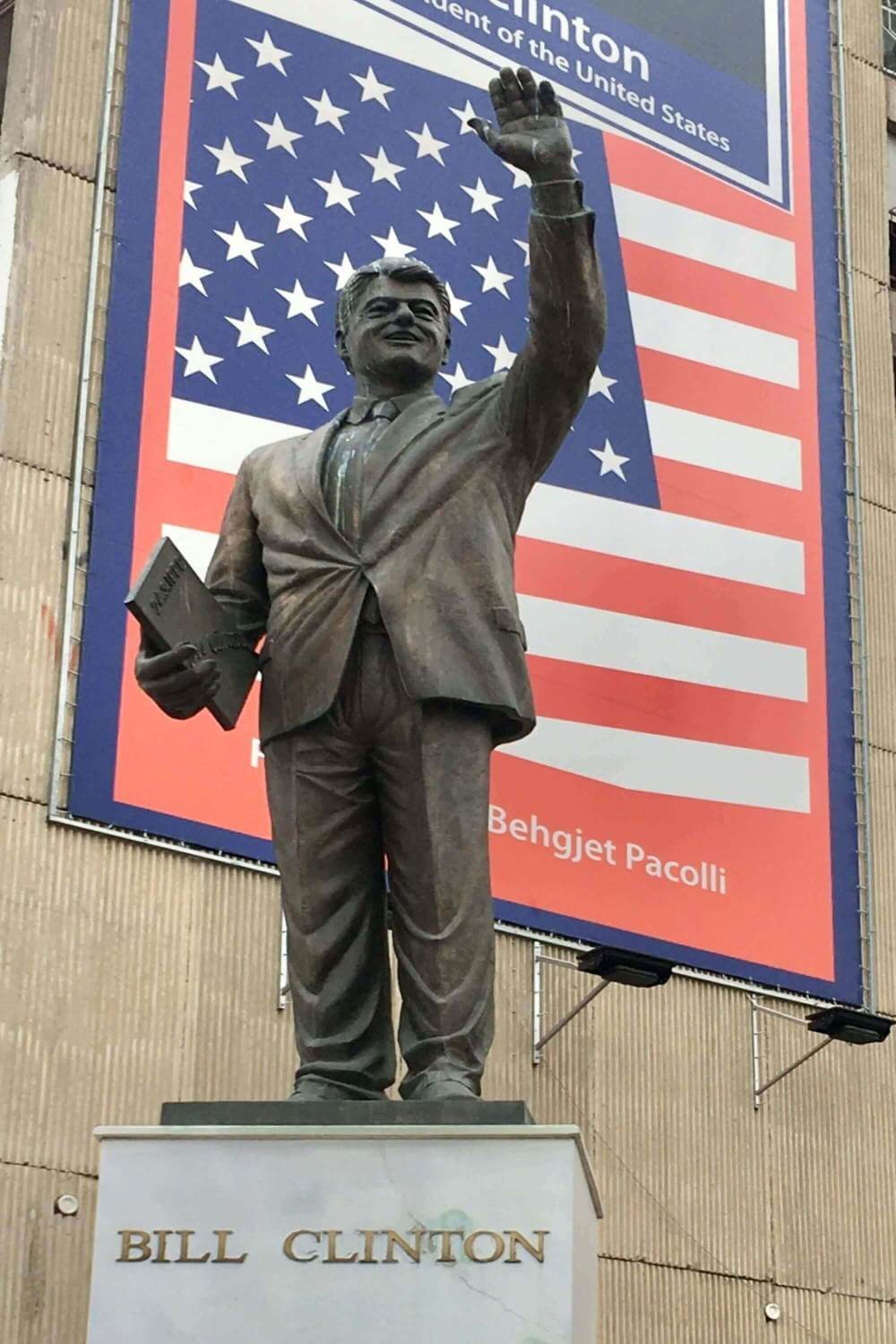
The National Library of Kosovo is modeled on a combination of Byzantine and Islamic art. In the 1990s, the National Library housed a large number of refugees from neighboring countries during the various wars that occured during the breakup of Yugoslavia. Designed by a Croatian architect, and completed in 1982, it is often seen on lists of the ugliest buildings in Europe. I arrived in Pristina by bus at 4 am, and walked around the city in the pre-dawn hours. When I first saw the National Library, its prison bar-like casing and the stray dogs dozing in its entrance had me convinced that it must be an insane asylum. When I returned to check it out again after sunrise, the human to stray dog ratio had significantly increased, and it was noticeably less macabre.
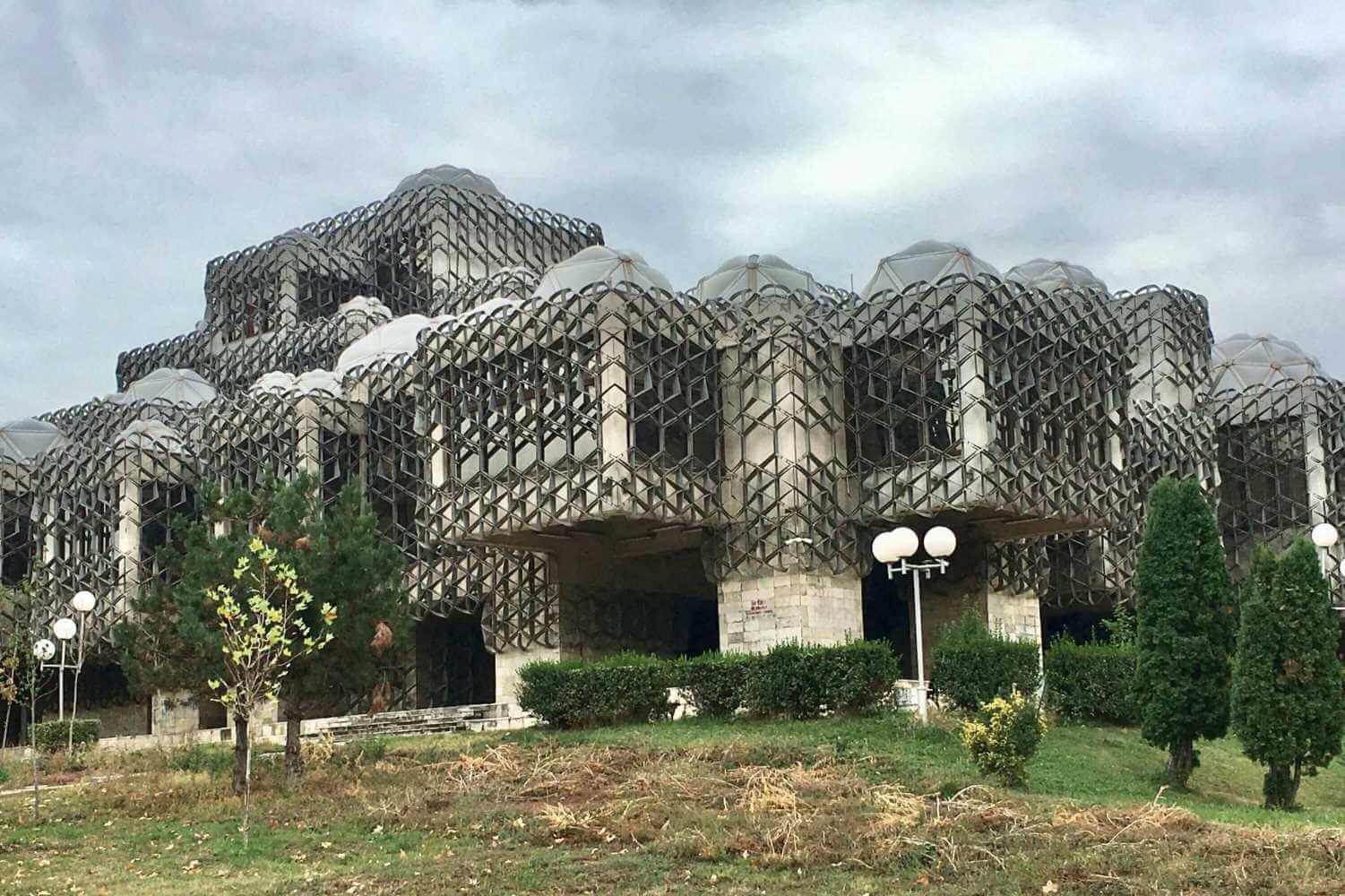
The Newborn monument celebrates Kosovo's being the newest country in Europe. It opened on February 17, 2008, the same day that Kosovo declared its independence from Serbia. It is in front of the Palace of Youth and Sports pictured here, a complex that hides a large stadium and shopping center. On either side of the Palace, you can see a line of both Kosovan and Albanian flags, which made me realize just how culturally connected the two countries are. Although the Newborn Monument was nothing spectacular architecturally, I found the hope and excitement that it conveyed about Kosovo's future to be quite inspiring.
